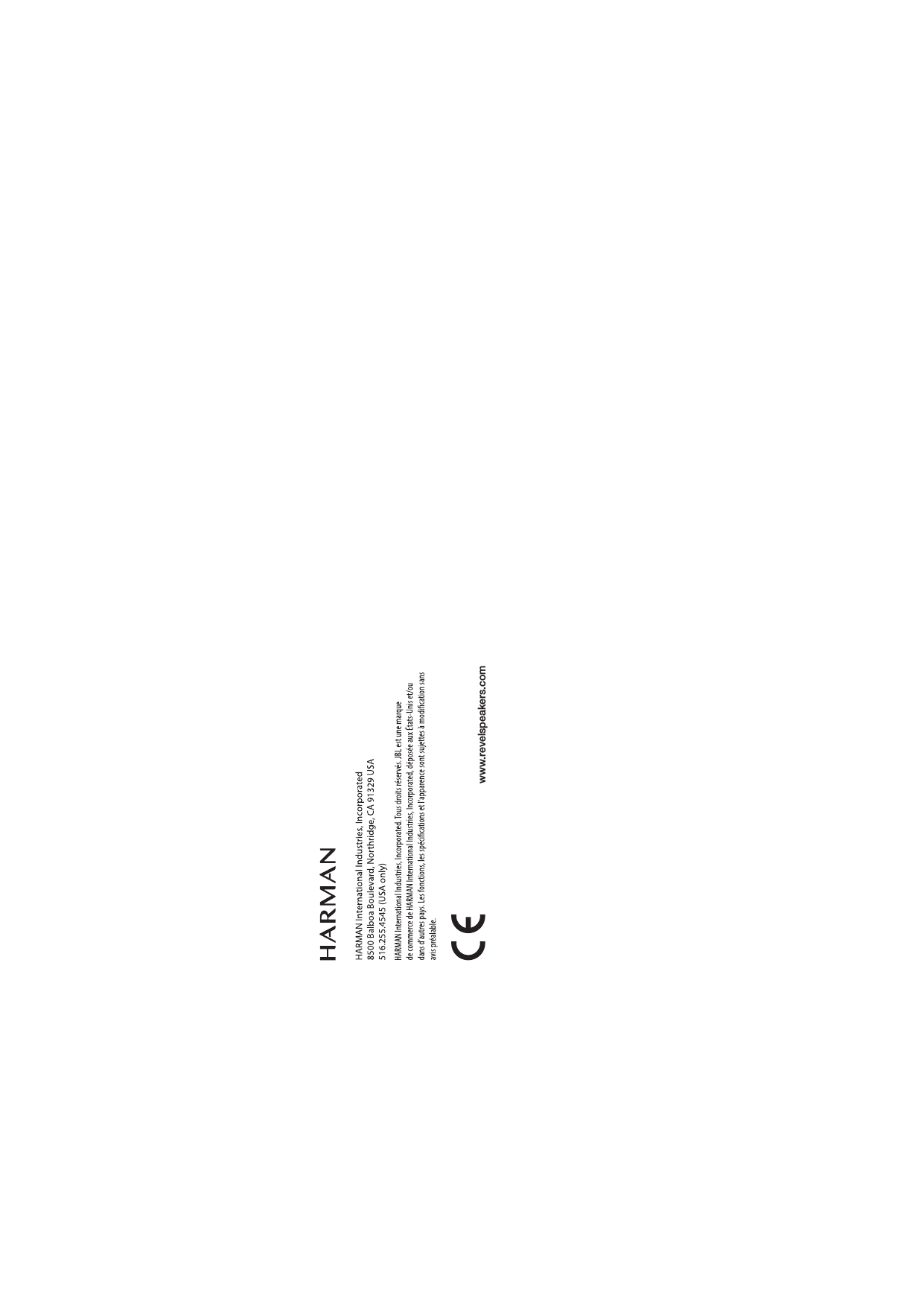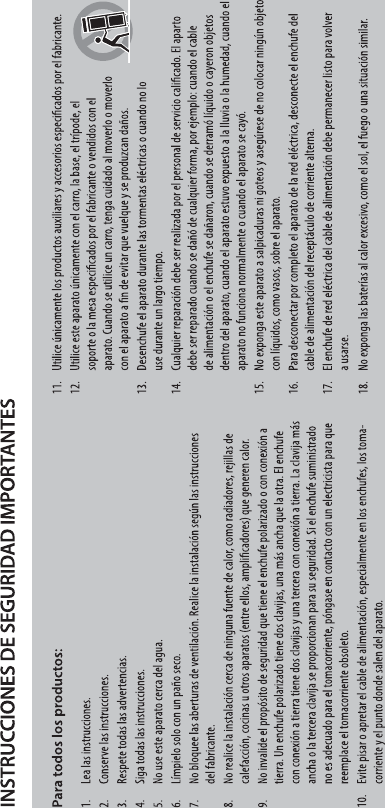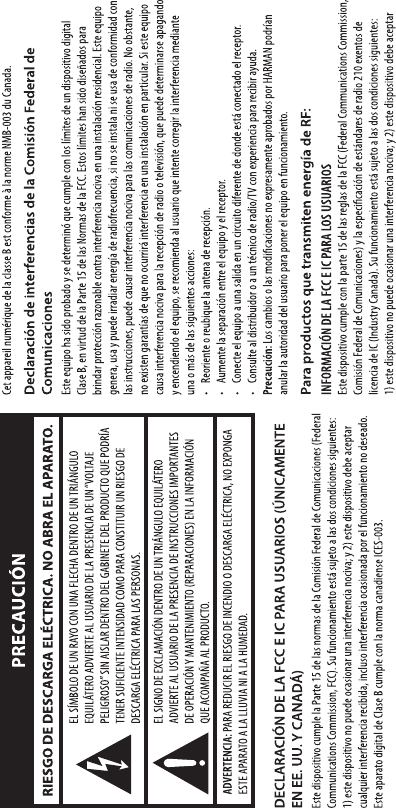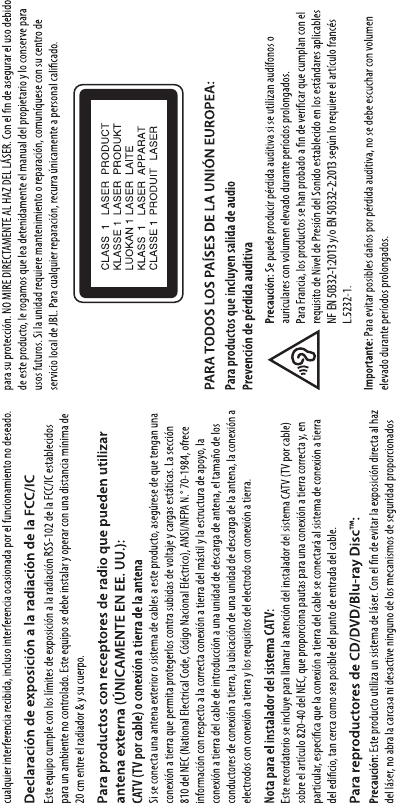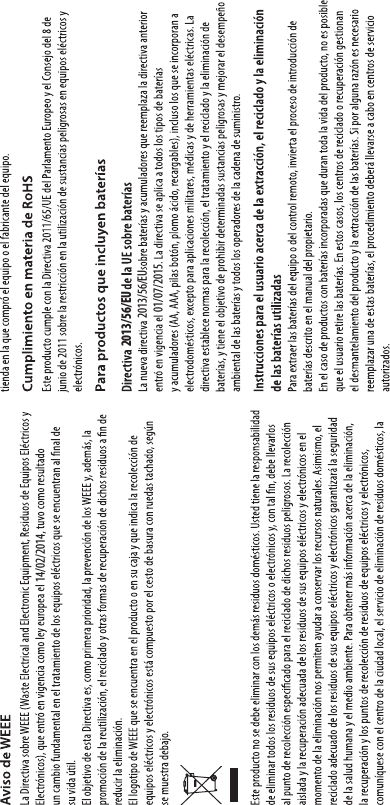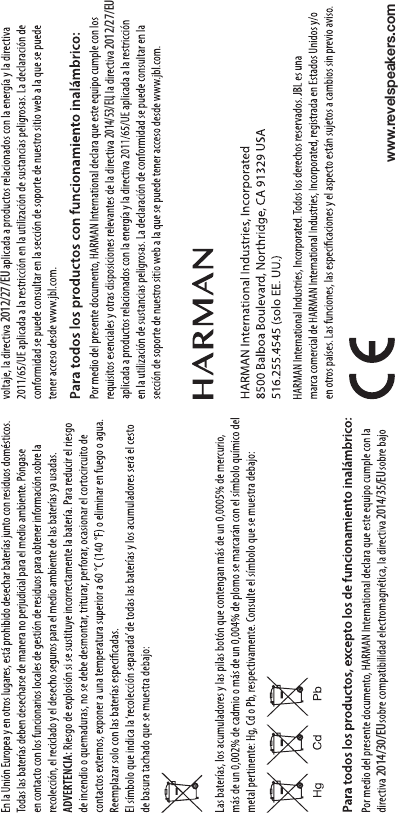Harman REVELB8SUB Transmitter box User Manual B8 T UserMan
Harman International Industries, Inc Transmitter box B8 T UserMan
Harman >
Contents
- 1. Users Manual-1
- 2. Users Manual-2
- 3. Users Manual-3
- 4. Users Manual-4
- 5. Users Manual-5
Users Manual-1
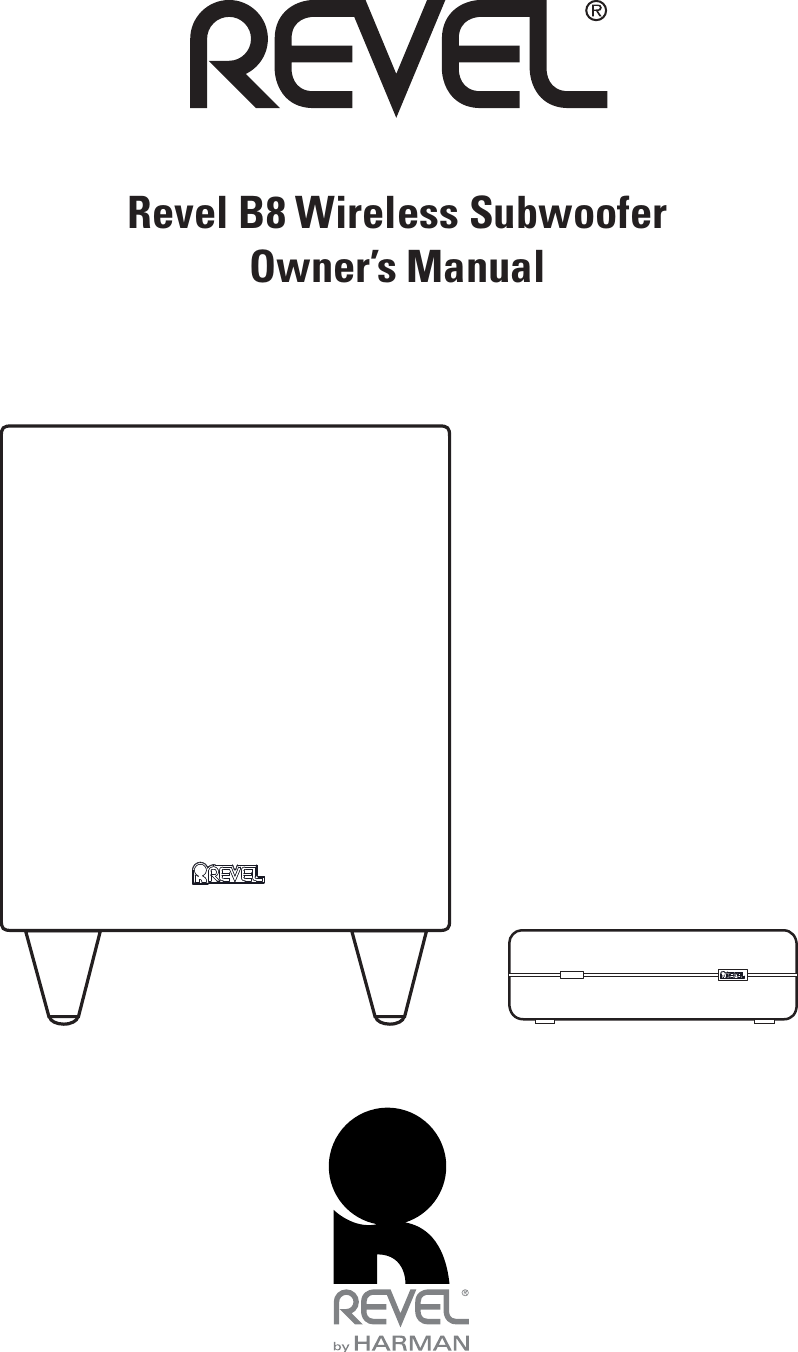
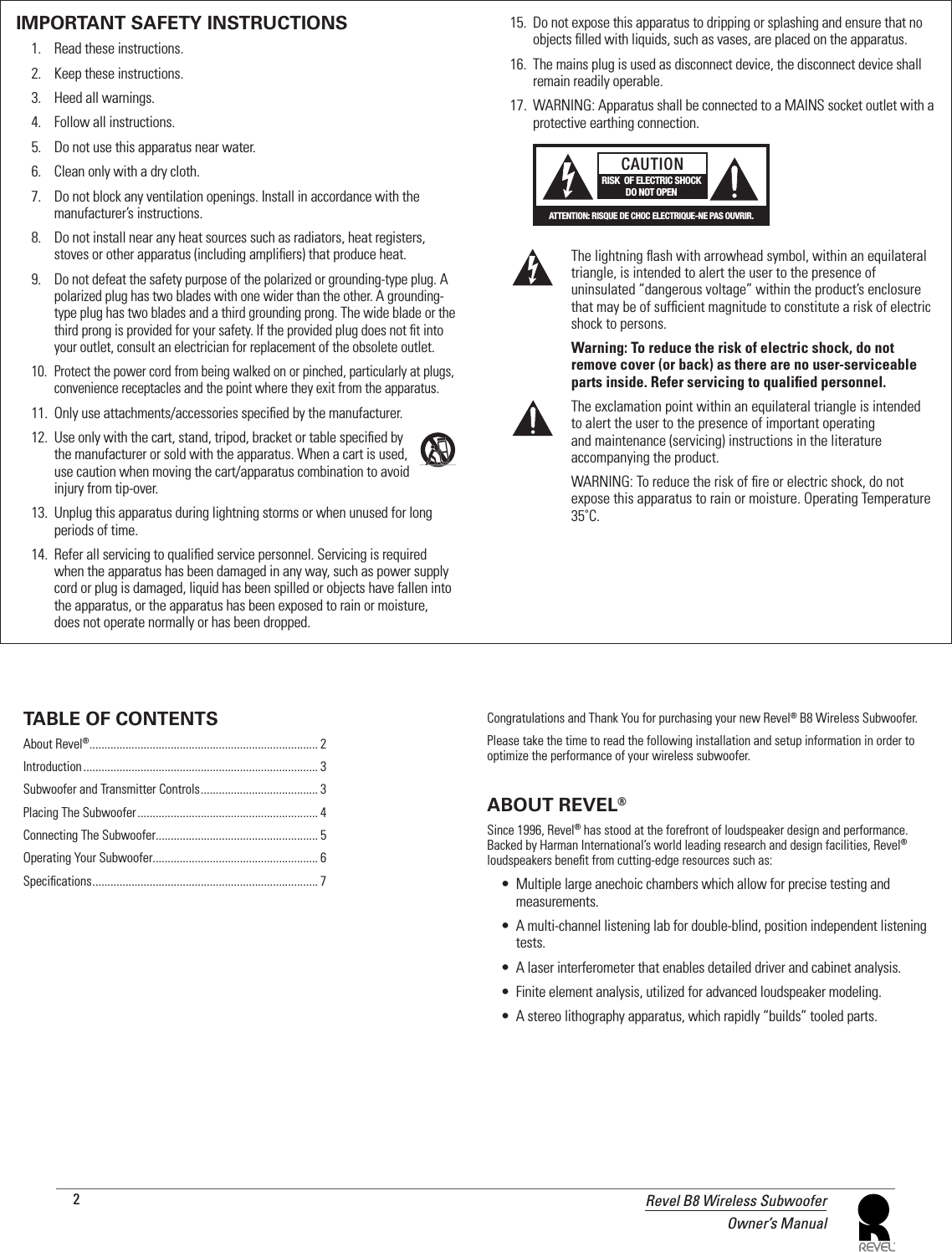
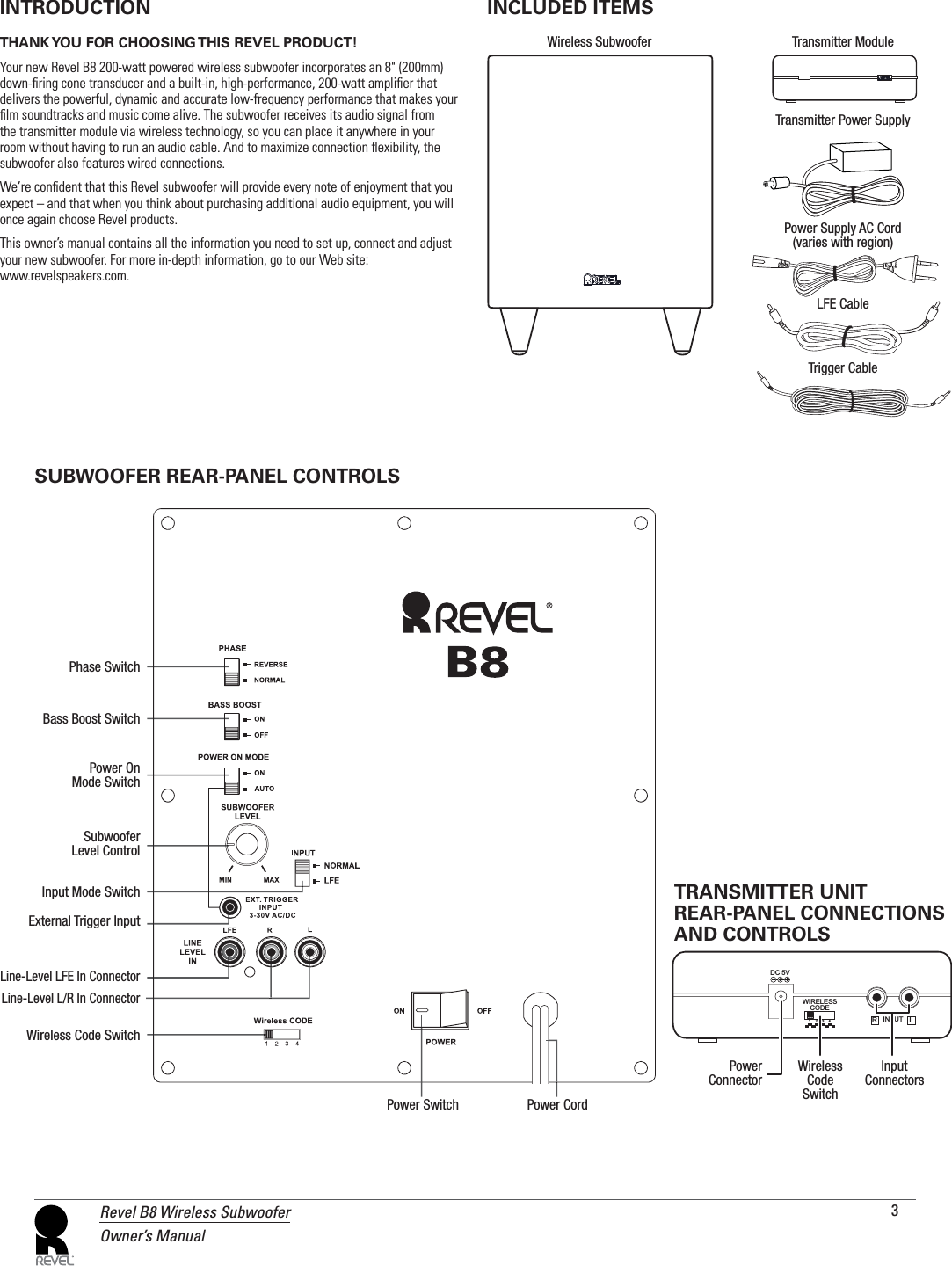
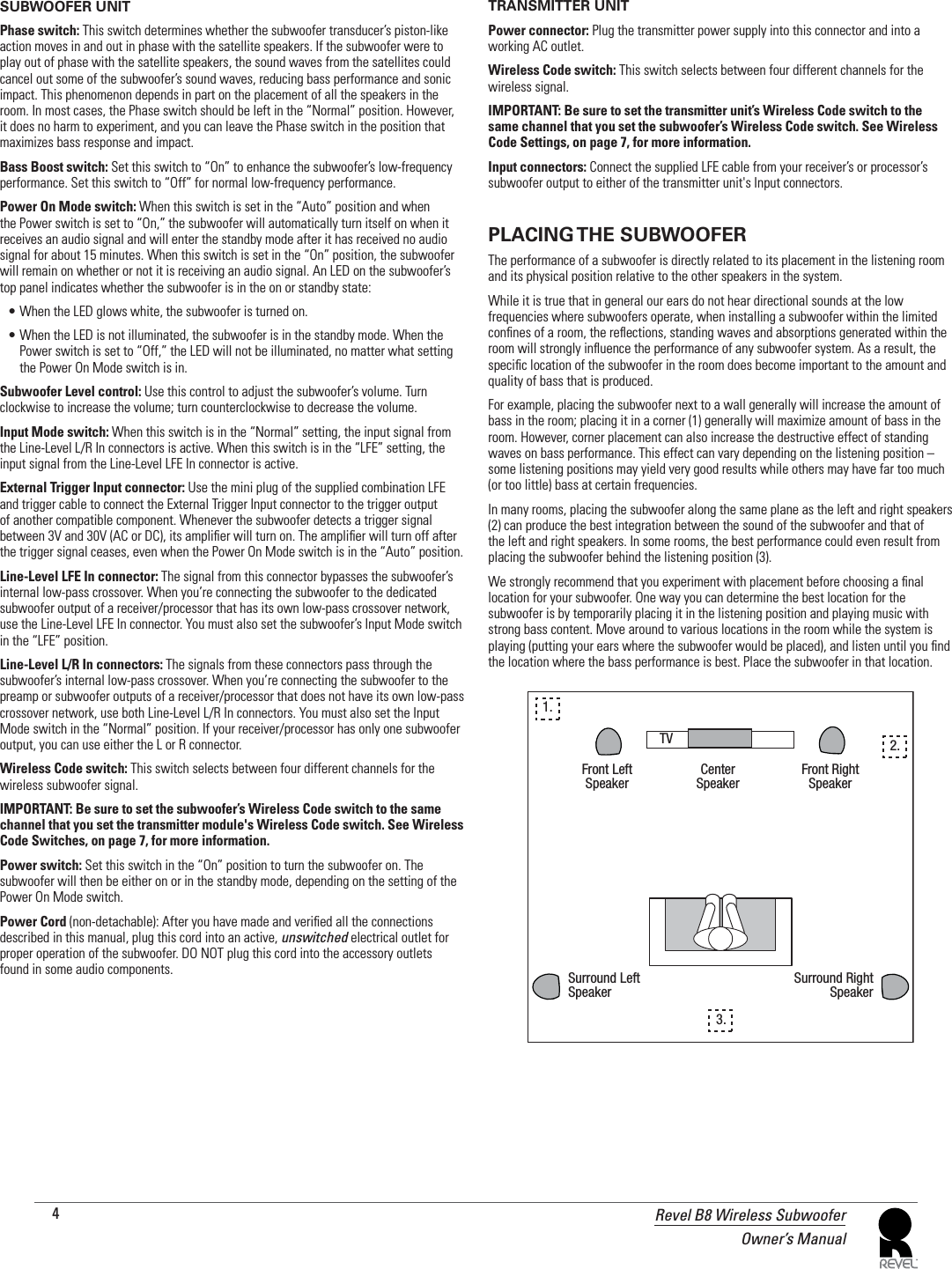
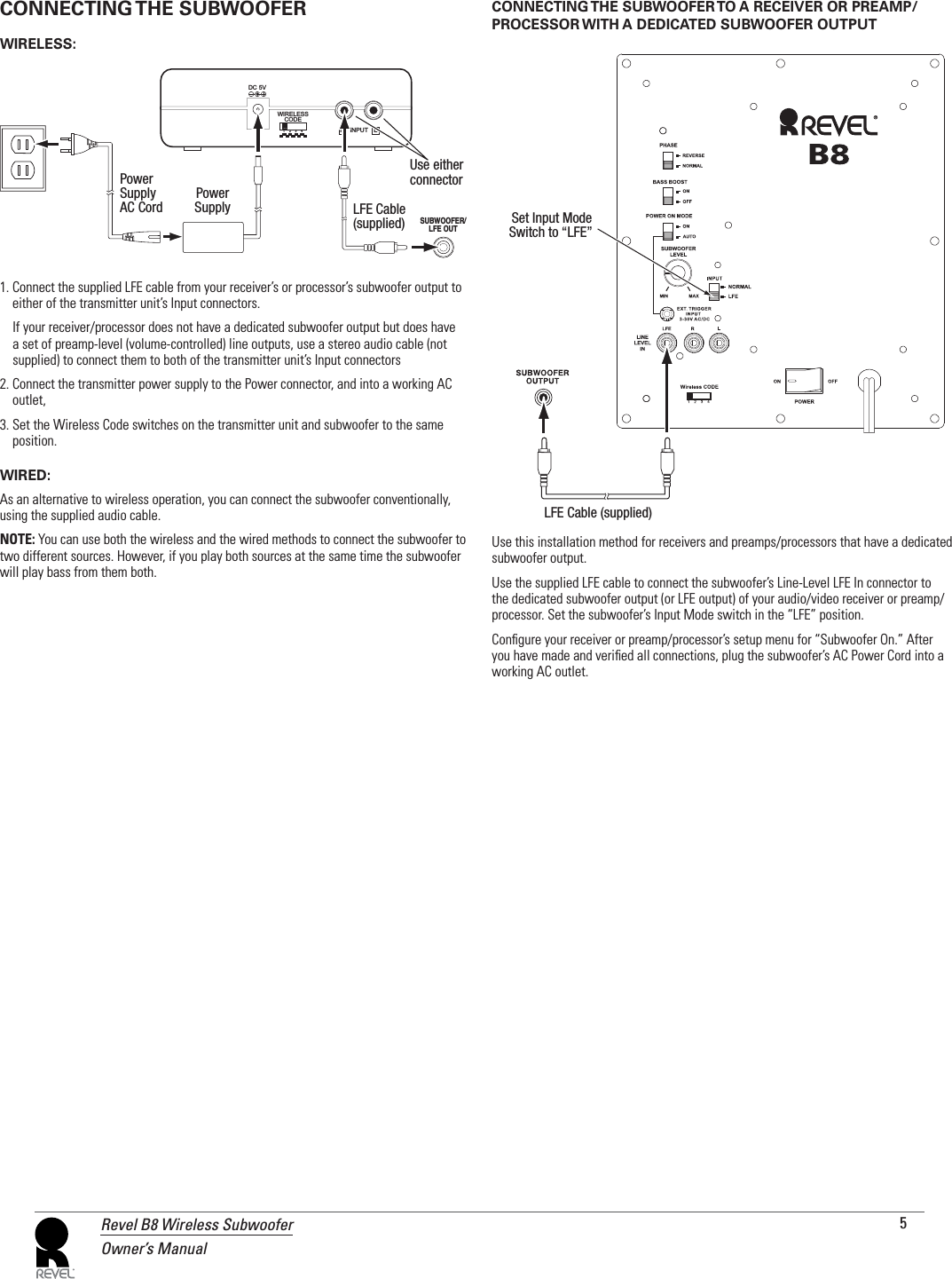
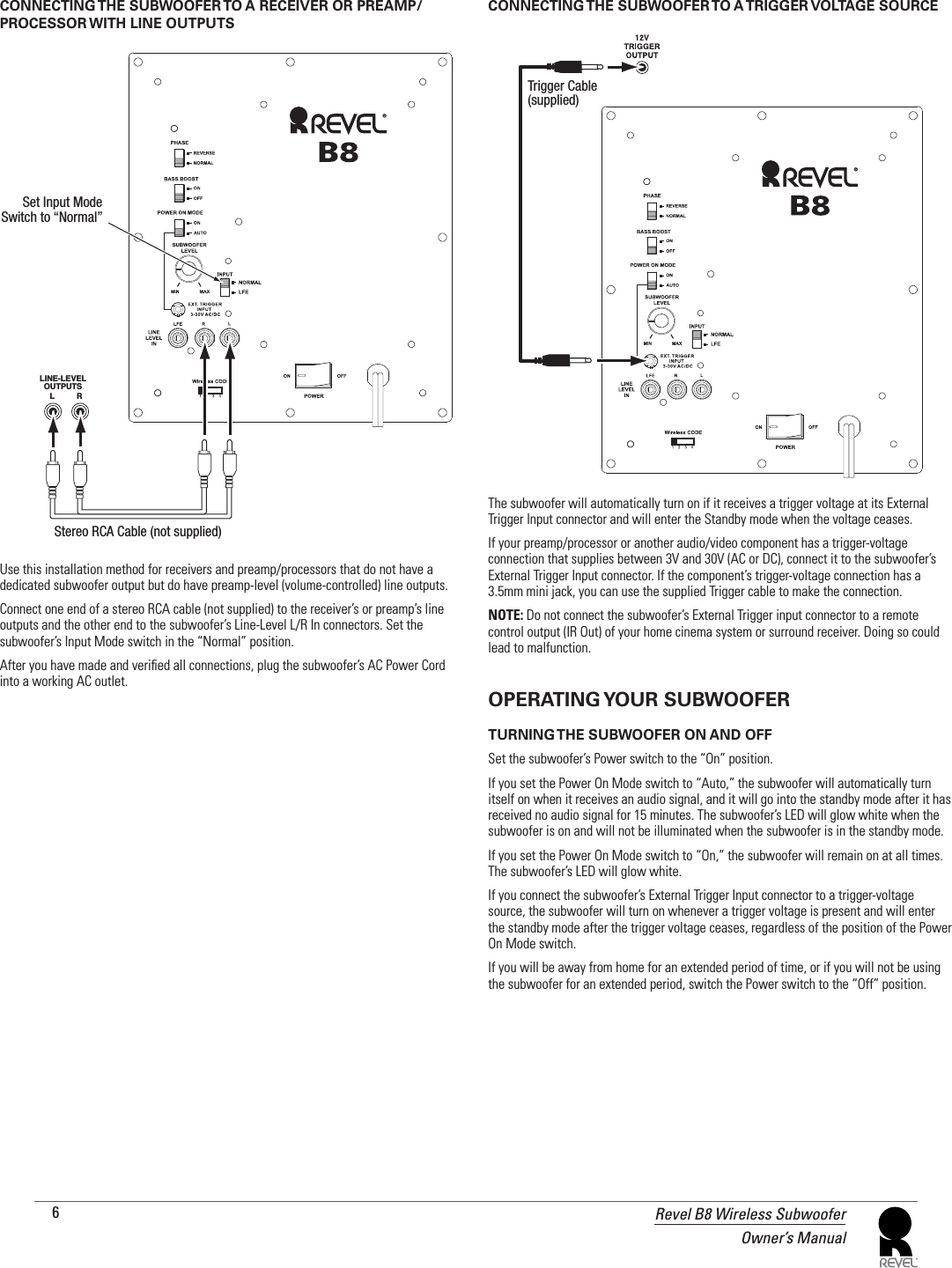
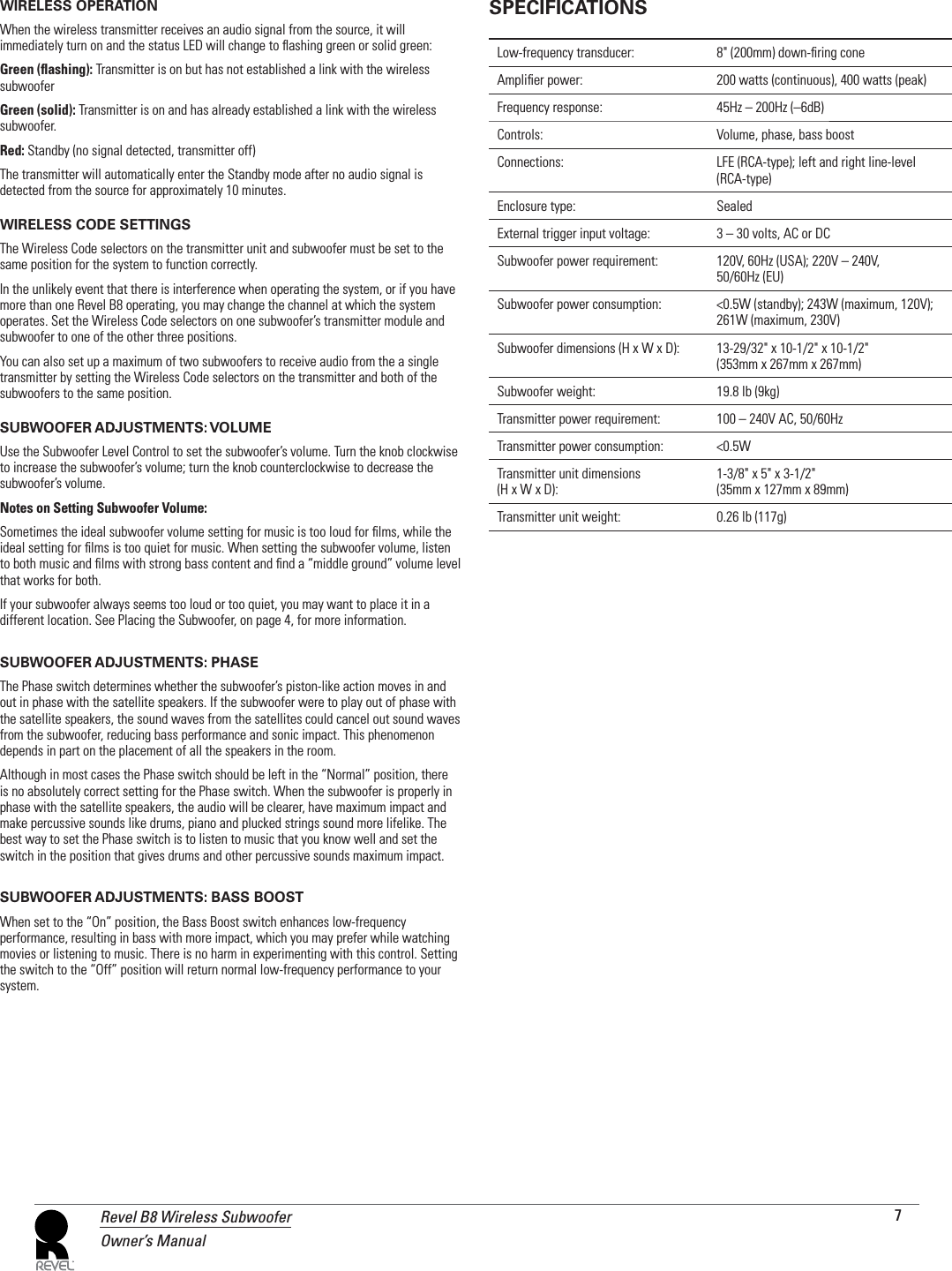
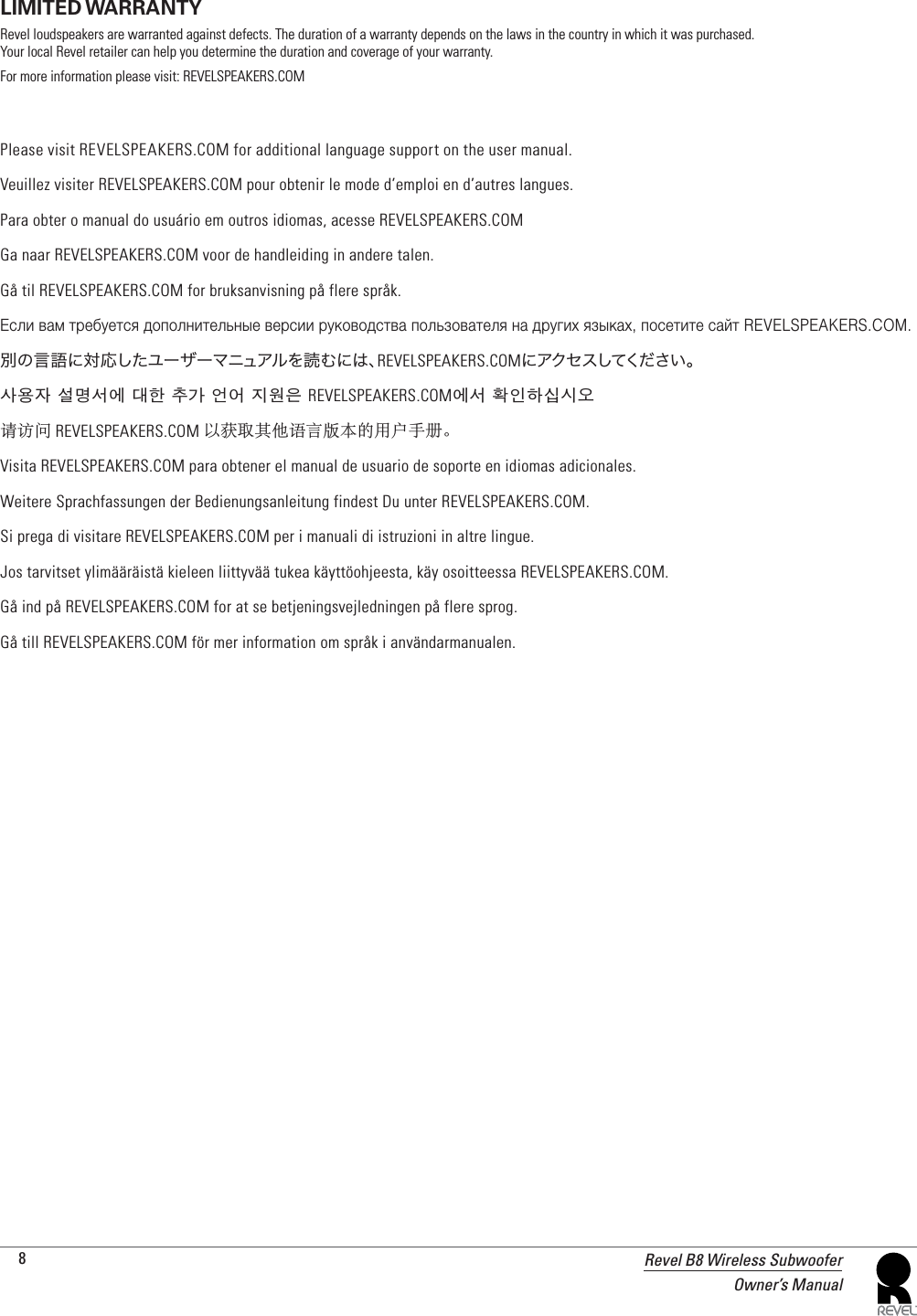
![ Revel !"#$%&$'()!*+#!,$$+'-$$!./ (06 77789:0';'%,$<)()(=)-;>?@ '+A@.A. BFFGHHJKMQXYF9JYZ[Q)\YH]^\_[MH)`;a,&-b&&-9'$9c$!/<@ - /<+Ad d<@<@6f.g9h)(<+i$'$$$$$$$9jk$$$$$$$gjh9Aa#9m9+n9))bgkh9a>9i$'$m9i$''n9i$'i))b)HARMAN International, Incorporated 8500 Balboa Boulevard, Northridge, CA 91329 USA© 2017 HARMAN International, Incorporated. All rights reserved. Revel and the Revel logo are trademarks of HARMAN International Industries, Incorporated, registered in the United States and/or other countries.Features, specifications and appearance are subject to change without notice.For questions, assistance or additional information concerning any of our products, call us at: (516) 594-0300 or (888) 691-4171. For technical support, submit your detailed inquirywww.revelspeakers.comPart No. 950-0549-001мȞġĈҳˀΙĀǩ؆Ӎߒʔˌɫǩ؆ ϝԶˌɫĈҳˀΙͱʻً2D ᰽*I⬠%Fԣ͍Ჱ%T8+ Ġ⅑Ԓᐸ2$$ Ġ⅑ȕ᧠⓬2$&'Ǘɢذ ߩݨǗɢذ뼷ǗɢذĘĀǗŔতɫ쨞ă̞ಗ̖ǭǗŔতɫ쨟뼷ʭˌȠȱΪˈϞ : ᅢɆ ʋ뼷ǚذ뼷ӺذDž : ̖ǭǗŔতˌɫ Ȼؤ،뼷̝ٛԟ뼷ęՏǗ̚Ǘ̗뼷Ǘ۷ǝ : ઐɫ ǗϞ뼷ĸdžΒ뼷̞̔Dž : ǕȩϜ֪֘5,6Āܪǭৠ̑1쨰ȩФ˽ĈҳˀΙć˽ˌɫǨĈߴΙࠒնġĀߒʔߴć)$6ܪǭĀՃʔđ́ŗĪ뼶:쨰ȩФ˽ĈҳˀΙχɹć˽ˌɫĀԚĂߴΙࠒնġĀߒʔɸś)$6ܪǭĀՃʔđ́뼶ćġϾĉΦդŠŚؗʭܽߊĀǗŔǗǯмȞĘȜߩĈrց̝̹ůʿr'2W2̸뼶ࠦްġĀ̽ϹͳȩмȞĀȢ˩ց̝̹ůŭՃ뼶](https://usermanual.wiki/Harman/REVELB8SUB.Users-Manual-1/User-Guide-3521223-Page-9.png)

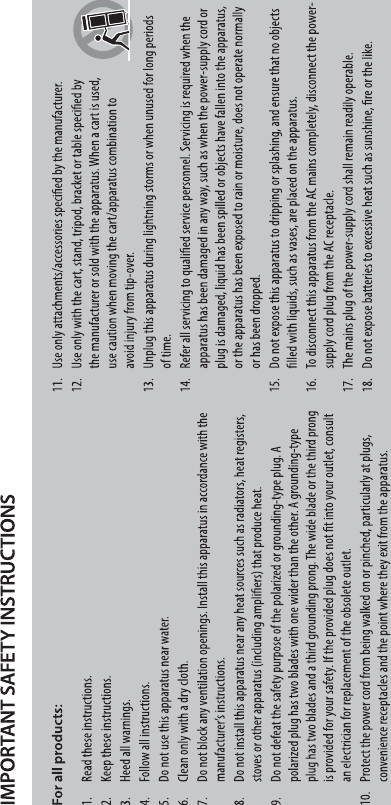
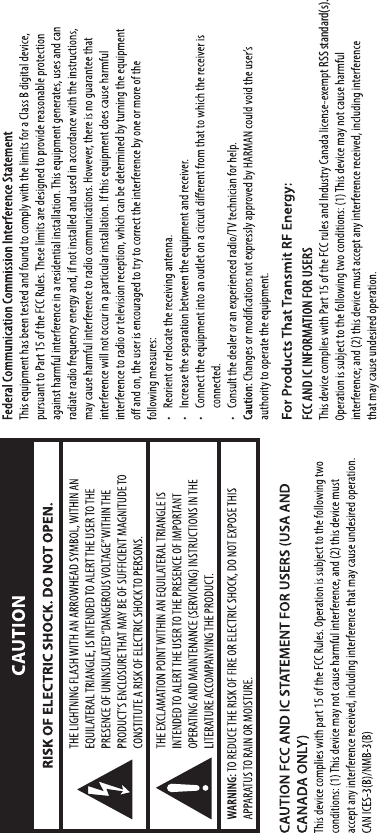
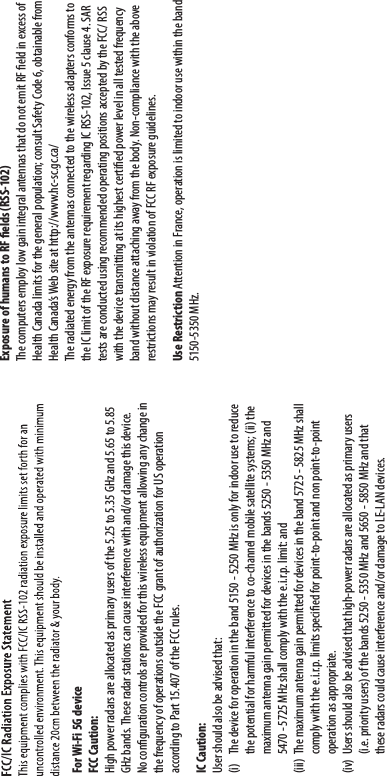
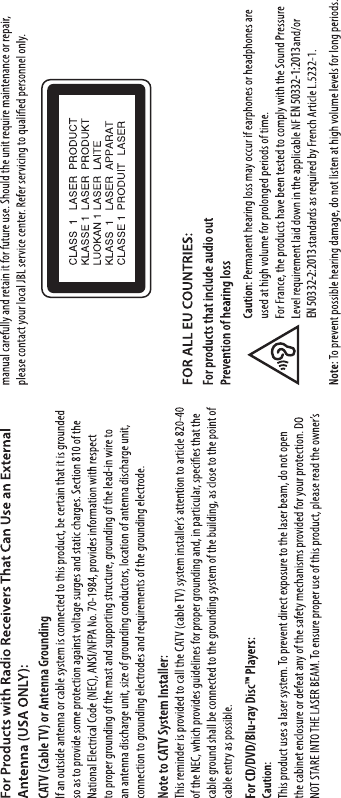
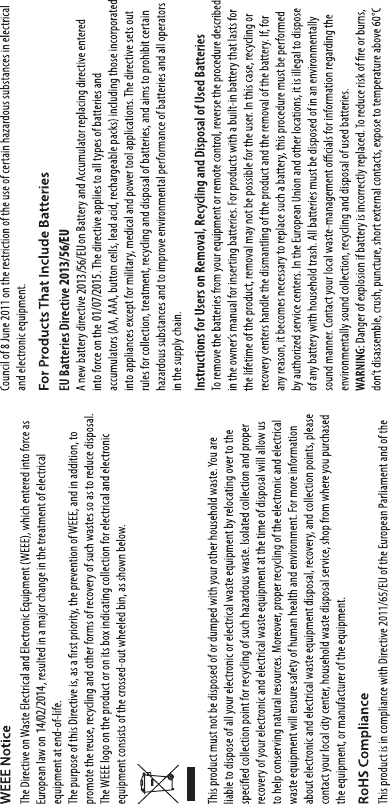
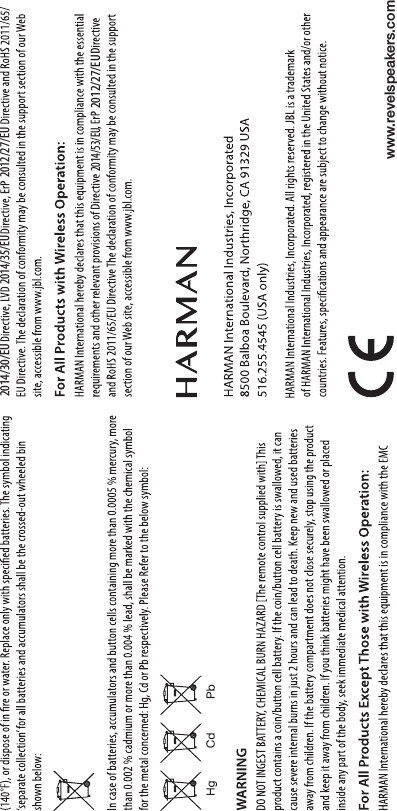

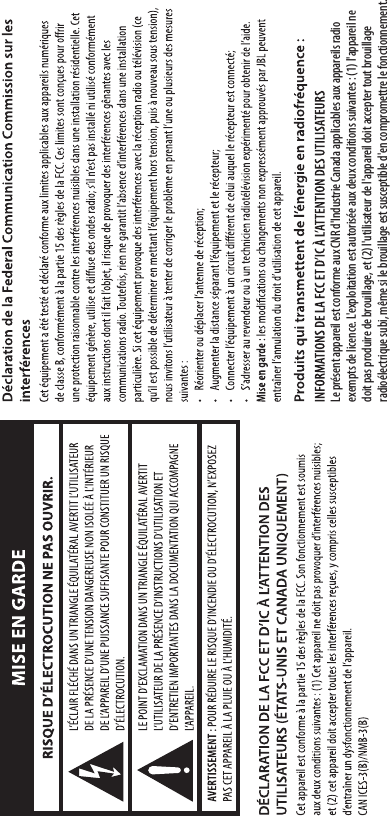
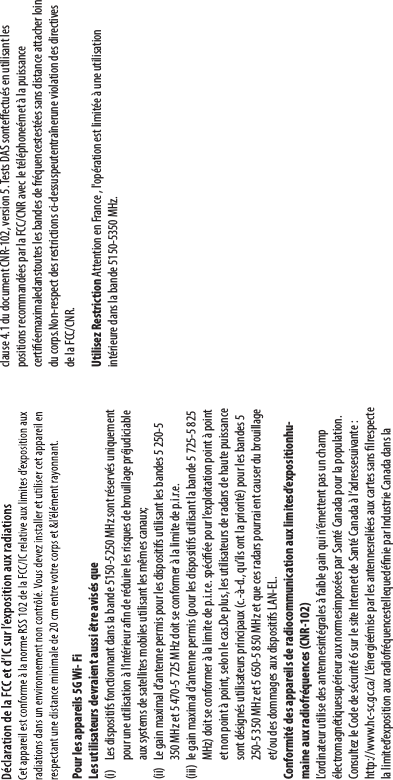
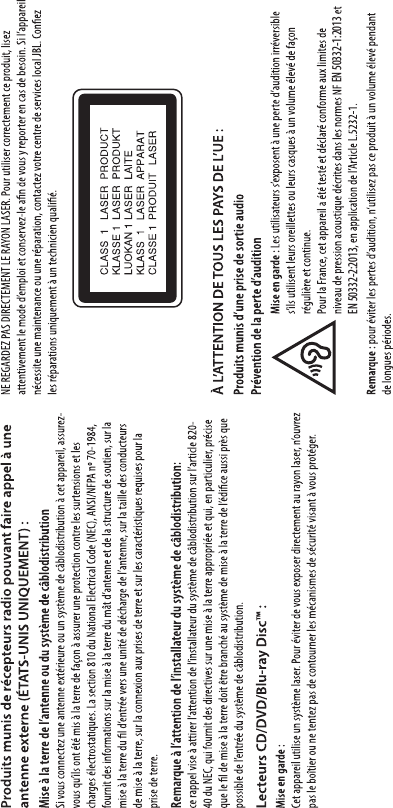
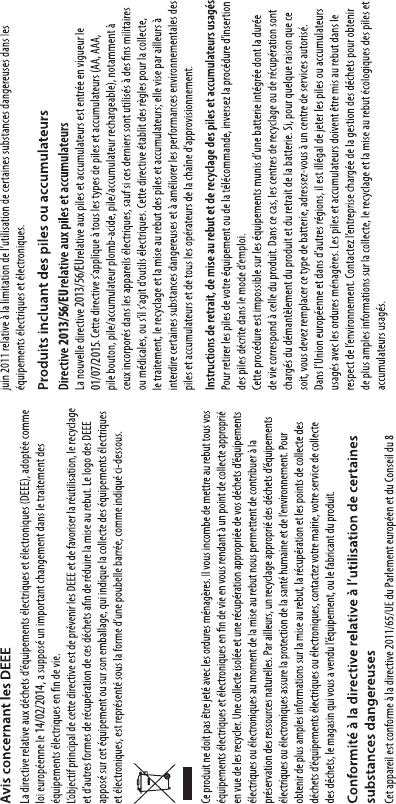
![AVERTISSEMENT : Ne pas ingérer BATTERIE, BURN RISQUE CHIMIQUE [La télécommande fournie avec] Ce produit contient une pile pièce / bouton. Si la pile pièce / bouton est avalé, il peut causer des brûlures internes graves en seulement 2 heures et peut conduire à la mort. Gardez piles neuves et usagées de portée des enfants. Si vous pensez que les batteries pourraient avoir été avalé ou placé à l'intérieur d'une partie du corps, consulter immédiatement un médecin.2014/30/EU2014/35/EU2012/27/EU2014/53/EU2012/27/EU](https://usermanual.wiki/Harman/REVELB8SUB.Users-Manual-1/User-Guide-3521223-Page-22.png)
